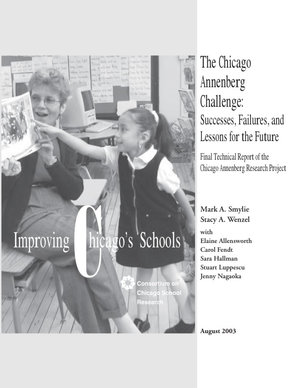1. Did the Chicago Annenberg Challenge promote improvement of the schools that it supported?
2. Among those schools, did it also promote improvement in student academic achievement and other outcomes?
3. What factors might explain improvement or lack thereof among Annenberg schools?
4. What can we learn from the Challenge's experiences to promote school improvement in the future?
From the 1996-97 through 2000-01 school years, the Annenberg Foundation awarded special funding to as many as 210 of Chicago’s public schools, 90 percent of which were elementary schools. The funding, which had also been provided to cities such as New York and San Francisco, was part of a large-scale local school reform philosophy that intended to improve student achievement and other social and psychological outcomes. In Chicago, the Annenberg Challenge reflected a democratic localism that placed great faith in the ability of local schools, in partnership with parents and their communities, to develop their own strategies to achieve professional development and instructional goals.
In order to determine the value of such reforms, the Chicago Annenberg Challenge funded a five-year analysis of the program, led by Mark Smylie, Stacy Wenzel, and a specialized Consortium research team. This team received guidance from a diversified base of local and national researchers and educators, including dozens of Chicago Public School (CPS) teachers.
Drawing from student test scores, longitudinal surveys, and teacher and principal interview data, the Consortium team evaluated whether the Challenge catalyzed school improvement and student academic achievement, and investigated the myriad factors that contributed to these results. During the same period as the study, CPS implemented its own set of major reforms, including high-stakes testing, increased emphasis on basic reading and mathematics skills, and the end of social promotion. As a result, this report also examines the ways in which the Chicago Annenberg Challenge’s goals conflicted with those of CPS, and how those conflicting policies may have helped or hindered students’ and schools’ success. Understanding these outcomes will inform future large-scale school reform initiatives and their implementation at the local school level.



